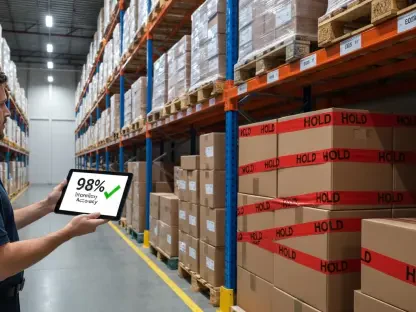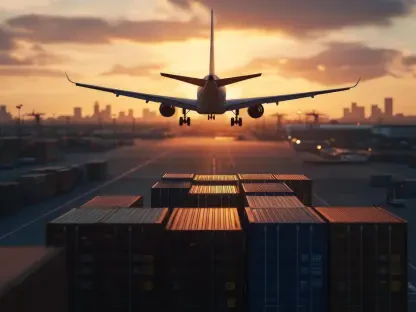Today, we’re thrilled to sit down with Rohit Laila, a seasoned veteran in the logistics industry with decades of experience spanning supply chain management and delivery operations. Rohit’s passion for technology and innovation has positioned him as a thought leader in leveraging cutting-edge solutions to tackle some of the toughest challenges in logistics. In this conversation, we dive into the chaos of peak season, the transformative power of smart labels, and the critical role of in-transit visibility in modern supply chains. We’ll explore how these technologies address disruptions, combat fraud, and ensure compliance in high-stakes industries, while also looking at the future of data-driven decision-making in logistics.
Can you start by explaining what peak season means for supply chains and why it poses such a significant challenge for shippers?
Peak season is essentially the Super Bowl for supply chains—it’s when demand skyrockets, often around holidays or major sales events, and every part of the logistics network is pushed to its limit. Think of it as a massive surge in orders that strains capacity at warehouses, ports, and transportation hubs. For shippers, the challenge lies in managing this volume while dealing with limited resources, congested networks, and unpredictable disruptions like weather or labor shortages. The stakes are incredibly high because delays or mistakes don’t just cost money—they can damage customer trust and lead to millions in lost sales. It’s a pressure cooker where every decision counts.
What are some of the most common disruptions shippers face during peak season, and how do these impact operations?
During peak season, disruptions are almost inevitable. You’ve got weather events shutting down roads or delaying flights, port congestion causing bottlenecks, and sudden spikes in demand that overwhelm capacity. Then there’s the human element—driver shortages or miscommunication between carriers and 3PLs can throw everything off. These issues ripple through the supply chain, leading to delayed shipments, missed service level agreements, and higher operational costs from expedited shipping or overtime labor. Worst of all, they erode customer satisfaction when orders don’t arrive on time, which can have long-term consequences for a brand’s reputation.
How do smart labels stand out compared to traditional tracking methods like barcodes or passive RFID tags?
Smart labels are a game-changer because they’re active, not passive. Traditional barcodes or RFID tags rely on manual scanning—someone has to physically check the item to update its status, which is a “pull data” approach. Smart labels, on the other hand, continuously “push” real-time data without any human intervention. They can transmit information like location, temperature, or even if a package has been tampered with, updating every 15 to 30 minutes. This means shippers get a live, granular view of their shipments, unlike the delayed or incomplete data from older methods. It’s like upgrading from a flip phone to a smartphone in terms of capability and insight.
Why is in-transit visibility so crucial during peak season, and what specific problems does it help solve?
In-transit visibility is the backbone of managing peak season chaos. When demand spikes, shipments are moving through multiple hands—carriers, ground handlers, 3PLs—and the risk of something going wrong skyrockets. Visibility gives shippers a clear, real-time picture of where their goods are, whether they’re on schedule, and if there’s an issue like a missed flight or a split load. Without it, you’re flying blind, waiting days or weeks to discover a problem, by which time it’s too late to fix. Visibility helps prevent delays, reduces lost goods, and keeps everyone accountable, which is absolutely critical when every minute matters.
Freight fraud and theft often surge during peak season. How do smart labels help mitigate these risks?
Freight fraud and theft are huge problems during peak season, especially for high-value goods like electronics. Smart labels tackle this by creating a digital fingerprint for every shipment. They track location and status in real time, so if a pallet goes off course or disappears, you know exactly where and when the anomaly happened. This builds a reliable chain of custody that’s hard to falsify, unlike paper records or manual updates. It deters theft because there’s an auditable trail, and if something does go wrong, the data helps resolve disputes or insurance claims quickly. It’s like having a security camera on every shipment—thieves are less likely to act when they know they’re being watched.
For time-sensitive shipments like pharmaceuticals or electronics, how do smart labels improve outcomes compared to manual tracking?
Time-sensitive shipments are a different beast—there’s no room for error. With manual tracking, you’re stuck with phone calls, emails, and spreadsheets, which are slow and prone to mistakes, especially during peak season when teams are swamped. Smart labels automate the process by delivering real-time alerts and data. If a pharmaceutical shipment’s temperature goes out of range or an electronics pallet misses a connection, the system flags it instantly and can even trigger automated responses like rebooking a flight. This cuts reaction time from hours to minutes, ensuring these critical goods reach their destination in perfect condition without costly delays.
Industries like food and beverage or pharmaceuticals face strict regulatory standards. How do smart labels support compliance in these sectors?
In regulated industries, compliance isn’t just a checkbox—it’s a matter of safety and legality. Smart labels help by monitoring conditions like temperature or humidity in real time, which is vital for things like vaccines or perishable food. If there’s a deviation, the system sends an immediate alert, allowing teams to intervene before the product is compromised. This can prevent recalls by identifying issues early and isolating affected batches instead of scrapping entire shipments. It also provides a detailed record for audits, proving that standards were met throughout the journey. Essentially, smart labels act as both a watchdog and a record-keeper, reducing risk and waste.
How does AI enhance the value of data from smart labels, and what kind of impact does this have on supply chain decision-making?
AI takes the raw data from smart labels and turns it into actionable intelligence. These labels generate a ton of information—route performance, carrier reliability, even seasonal risk patterns—and AI analyzes it to spot trends or predict problems. For instance, it can forecast delays based on weather or congestion data and suggest rerouting options before a disruption hits. It also automates routine decisions, like rebooking shipments, freeing up teams to focus on bigger-picture strategy. For shippers, this means fewer stockouts and better carrier negotiations. For 3PLs, it’s a way to stand out by offering data-driven value. AI doesn’t just inform decisions—it transforms how the supply chain operates.
What is your forecast for the future of in-transit visibility and smart labeling technologies in logistics?
I’m incredibly optimistic about the future of in-transit visibility and smart labeling. As technology advances, I expect these solutions to become even more integrated and intelligent. We’ll see smarter sensors that monitor a wider range of conditions, paired with AI that’s even better at predicting and preventing issues. I think adoption will grow across industries, not just in high-stakes sectors like pharma, as the cost of these technologies comes down. We’re also likely to see tighter integration with IoT and blockchain for unbreakable transparency and security. Ultimately, I believe in-transit visibility will become the standard, not the exception, turning logistics from a reactive field into a proactive, predictive powerhouse.









